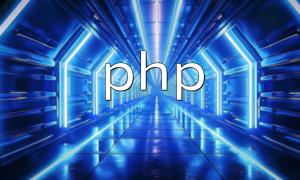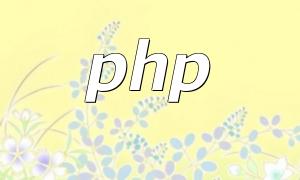In the rapidly evolving landscape of internet technology, Facebook's PHP architecture is widely recognized for its outstanding performance and scalability. This article delves into the core components of this architecture and explores its practical application in large-scale web applications.
Facebook originally developed its website based on the PHP language. To meet the increasing traffic and complex functionality requirements, it deeply customized PHP to form a unique architecture. This architecture not only supports dynamic content generation but also optimizes execution efficiency.
To address some limitations of PHP, Facebook developed the Hack language, which extends PHP by adding static typing and just-in-time compilation. This enhancement improves code execution efficiency and significantly reduces runtime errors, becoming a key factor in the success of Facebook's PHP architecture.
To further enhance performance, Facebook introduced HHVM (HipHop Virtual Machine). HHVM uses just-in-time compilation technology to convert PHP code into efficient machine code, greatly improving page load speed. Its design supports high concurrency, meeting the demands of a large social platform.
The Facebook PHP architecture relies on several key components working together to achieve efficient data processing and user interaction.
Multiple database technologies are used to manage the vast amount of data, including MySQL and the self-developed TAO database, which focuses on efficient access to social graph data and supports real-time updates.
Using caching technologies like Memcache, Facebook stores frequently accessed data in memory, significantly reducing database queries and enhancing access speed and response efficiency.
The architecture adopts a distributed systems design to ensure high availability and load balancing by distributing processing loads across multiple servers, guaranteeing the platform can handle hundreds of millions of user requests.
The ongoing success of Facebook's PHP architecture also depends on rigorous development processes and an active open-source community. Open-source projects foster technological exchange and innovation, driving continuous evolution.
Advanced continuous integration and automated deployment tools are used to ensure code quality and system security. Automated testing and monitoring allow teams to promptly identify and resolve issues.
Facebook's PHP architecture combines the static typing advantages of the Hack language, the performance benefits of HHVM just-in-time compilation, and efficient database and caching mechanisms to build a stable and flexible platform capable of supporting a massive global user base. Understanding this architecture helps developers improve their skills and provides valuable insights for studying modern web architectures.
Technological innovation and practical application are the key drivers of success for large internet companies, and Facebook's PHP architecture is a remarkable example of this principle.








